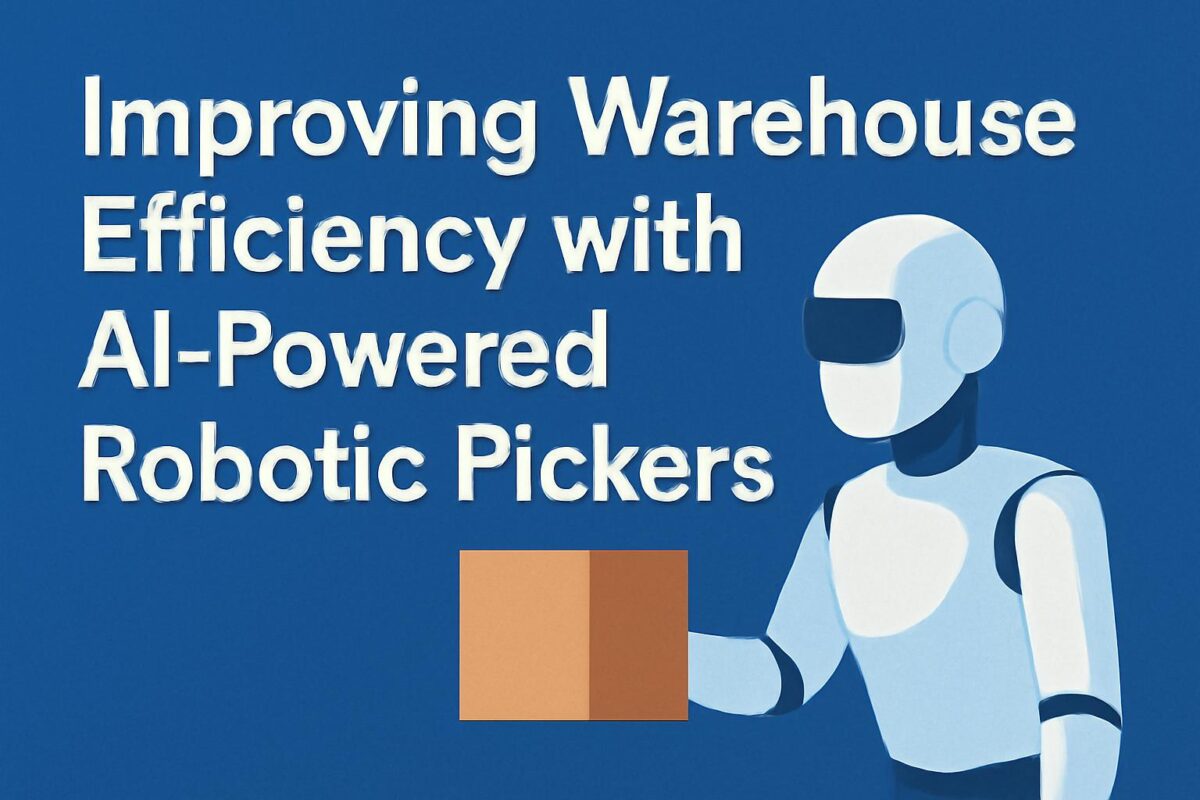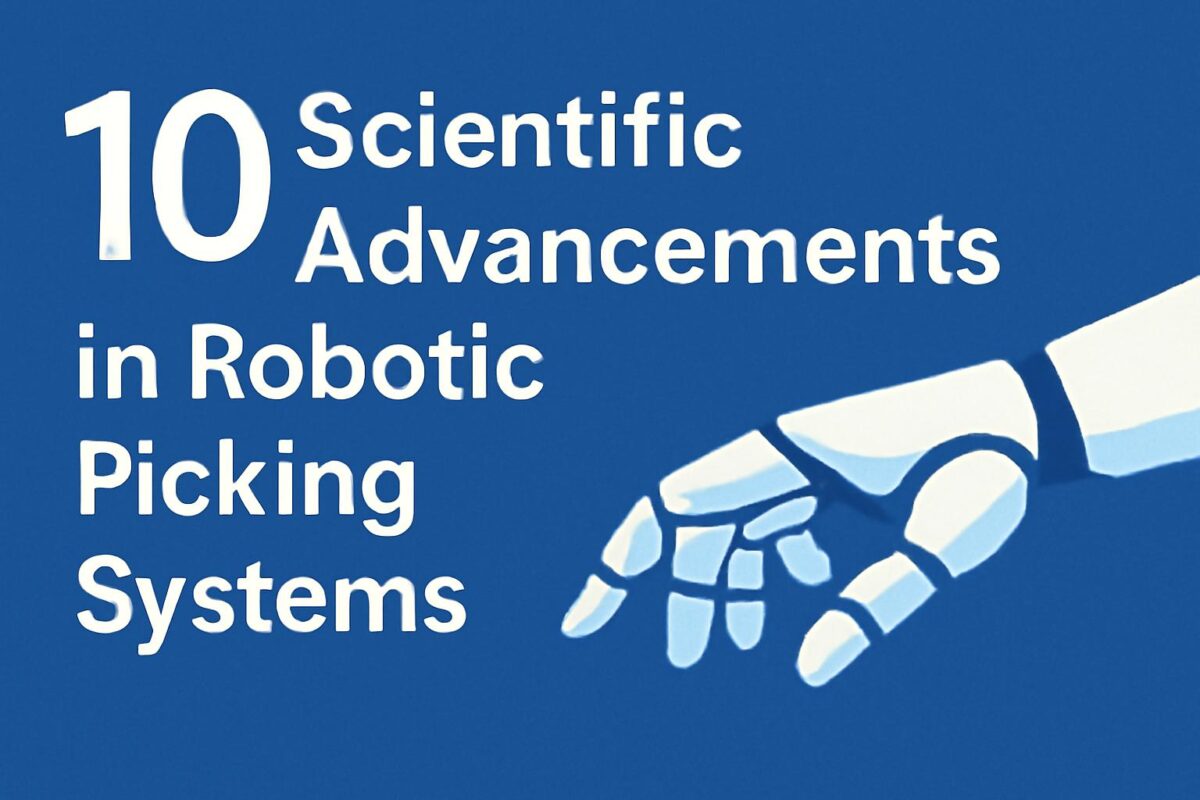Improving Warehouse Efficiency with AI-Powered Robotic Pickers
Introduction
The modern warehouse is evolving rapidly, driven by innovations in AI-powered robots and robotic warehouse pickers that redefine how goods are handled and managed. As supply chains become increasingly complex and consumer expectations for fast, accurate delivery rise, companies are turning to automated inventory systems to boost warehouse efficiency and maintain a competitive edge.
AI and Robotics: Revolutionizing Warehouse Operations
AI in logistics is not just about replacing manual labor, it’s about enhancing operational precision, speed, and flexibility. Smart picking robots equipped with advanced sensors and machine learning algorithms are now capable of identifying, selecting, and transporting items with incredible accuracy. This drastically reduces errors and streamlines workflows that were once prone to human limitations.
Key Features of AI-Powered Robotic Pickers
- Adaptive Vision Systems: Robots use AI-driven cameras and image recognition to identify products of varying sizes, shapes, and packaging.
- Automated Gripping Technology: Robotic arms adjust grip strength and technique based on item fragility, minimizing damage.
- Real-Time Data Integration: Connected to warehouse management software, these robots update inventory in real-time, ensuring accurate stock levels.
- Self-Learning Capabilities: Machine learning models help robots improve their picking accuracy over time by learning from mistakes and adapting to new product types.
- Seamless Collaboration: Some AI-powered pickers are designed to safely work alongside human workers, enhancing overall team productivity.
Boosting Picking Efficiency and Warehouse Optimization
The impact on picking efficiency is profound. AI-powered robotic pickers can work continuously without fatigue, drastically increasing throughput during peak demand periods. Furthermore, integration with automated inventory systems means restocking and order fulfillment can be coordinated seamlessly, reducing delays and operational bottlenecks.
Warehouse optimization extends beyond just speed, these robotics warehouse solutions improve space utilization by enabling dynamic storage and retrieval patterns, making even small warehouses more productive.
ALSO READ: Listen Up: Here’s How to Stop Your Warehouse Wasting Your Money
Real-Time Inventory Accuracy
One of the biggest challenges in warehousing is maintaining up-to-date inventory records. Traditional manual inventory methods are prone to errors, delays, and discrepancies. AI-powered robotic pickers update stock levels instantly during picking or replenishment activities, which improves inventory accuracy significantly. Accurate inventory data means better demand forecasting, fewer stockouts, and less excess inventory, all contributing to lower carrying costs.
Enhanced Warehouse Layouts
The precision and flexibility of AI robots allow warehouses to adopt more compact storage layouts. Since robots can navigate tight aisles and reach items stored in unconventional ways, warehouses can maximize storage density without compromising access. This leads to reduced real estate costs and better utilization of available space.
Cost and Productivity Benefits
While the upfront investment in robotic technology may be significant, the long-term cost savings and productivity gains are undeniable:
- Reduced Labor Costs: Robots automate repetitive tasks, freeing human workers for higher-value activities such as quality control, complex decision-making, or customer service.
- Lower Error Rates: Improved accuracy reduces costly returns and mis-shipments, saving on reverse logistics and enhancing customer satisfaction.
- Increased Throughput: Robots operate 24/7 without breaks, scaling with business demands.
- Decreased Workplace Injuries: Robots take over physically strenuous or dangerous tasks, improving overall workplace safety.
- Energy Efficiency: Many AI-powered robots are designed for energy-efficient operation, reducing power consumption compared to traditional equipment.
Real-World Applications
AI-powered robotic pickers are already transforming industries:
- E-Commerce Fulfillment: Handling high volumes of diverse orders quickly and accurately. During peak seasons such as holidays or sales events, robotic pickers maintain rapid order fulfillment without needing additional temporary staff.
- Manufacturing Supply Chains: Efficiently moving parts to assembly lines with minimal downtime. AI-powered robots can adjust to sudden changes in production schedules or custom orders.
- Retail Distribution: Managing rapid restocking and returns in dynamic retail environments. Automated systems ensure shelves remain stocked and ready for customers, enhancing shopper experience.
Case Study: E-Commerce Giant
A leading e-commerce company integrated AI-powered robotic pickers into its fulfillment centers and reported a 40% increase in order processing speed. Errors dropped by 30%, and employee satisfaction improved as workers transitioned to less repetitive and safer tasks.
Overcoming Challenges in Adoption
Despite their benefits, integrating AI and robotics requires careful planning. Some common challenges include:
- High Initial Investment: Purchasing and installing robotic systems require a substantial capital outlay. However, as technology advances, hardware costs are declining, and flexible leasing or robotics-as-a-service models are making these innovations accessible to smaller businesses.
- Workforce Training and Change Management: Introducing robots changes job roles and workflows. Workers need to be trained to operate, maintain, and collaborate with these new technologies. Organizations that invest in upskilling tend to achieve smoother transitions and higher employee acceptance.
- Integration with Legacy Systems: Many warehouses operate with existing warehouse management software and infrastructure. Ensuring compatibility between new robotic systems and legacy IT environments is critical to avoid disruptions.
- Cybersecurity and Data Privacy: Increased connectivity exposes warehouses to potential cyber threats. Implementing robust cybersecurity protocols to safeguard data and robotic networks is essential for secure operations.
The Future Outlook: What’s Next for AI and Robotics in Warehousing?
The future of warehouse automation is bright and full of innovation. Here are some trends shaping the next wave:
- Collaborative Robots (Cobots): Unlike traditional robots that operate separately, cobots are designed to safely work alongside humans. These machines assist with physically demanding or repetitive tasks, boosting productivity while allowing human workers to focus on more strategic activities.
- AI-Driven Predictive Logistics: AI will increasingly enable warehouses to anticipate demand spikes, supply chain disruptions, and equipment maintenance needs. Predictive analytics will allow for proactive adjustments, reducing downtime and improving customer satisfaction.
- Cloud-Based Robotics Management: Centralized cloud platforms will enable real-time monitoring and control of robotic fleets across multiple warehouses. This will enhance coordination and efficiency at a global scale.
- Integration with IoT and Blockchain: Combining AI-powered robotics with IoT sensors and blockchain will bring unprecedented transparency and security to supply chains. Real-time tracking and immutable records will reduce theft, counterfeiting, and errors, fostering trust among stakeholders.
Conclusion
Improving warehouse efficiency with AI-powered robotic pickers is no longer a futuristic concept, it’s an operational necessity. By automating repetitive, error-prone tasks and integrating advanced AI capabilities, warehouses achieve greater speed, accuracy, and adaptability. These technologies empower businesses to meet rising consumer demands, reduce operational costs, and scale sustainably.
The journey to robotic warehouse automation requires strategic investment, workforce training, and IT integration, but the rewards are clear. Businesses that embrace AI-powered robotic pickers today position themselves for long-term competitive advantage in a rapidly evolving logistics landscape.
Take the Next Step in Warehouse Innovation
Ready to unlock the full potential of AI and robotics in your warehouse? Contact us today to explore how smart picking robots and automated inventory systems can transform your operations and drive efficiency.



